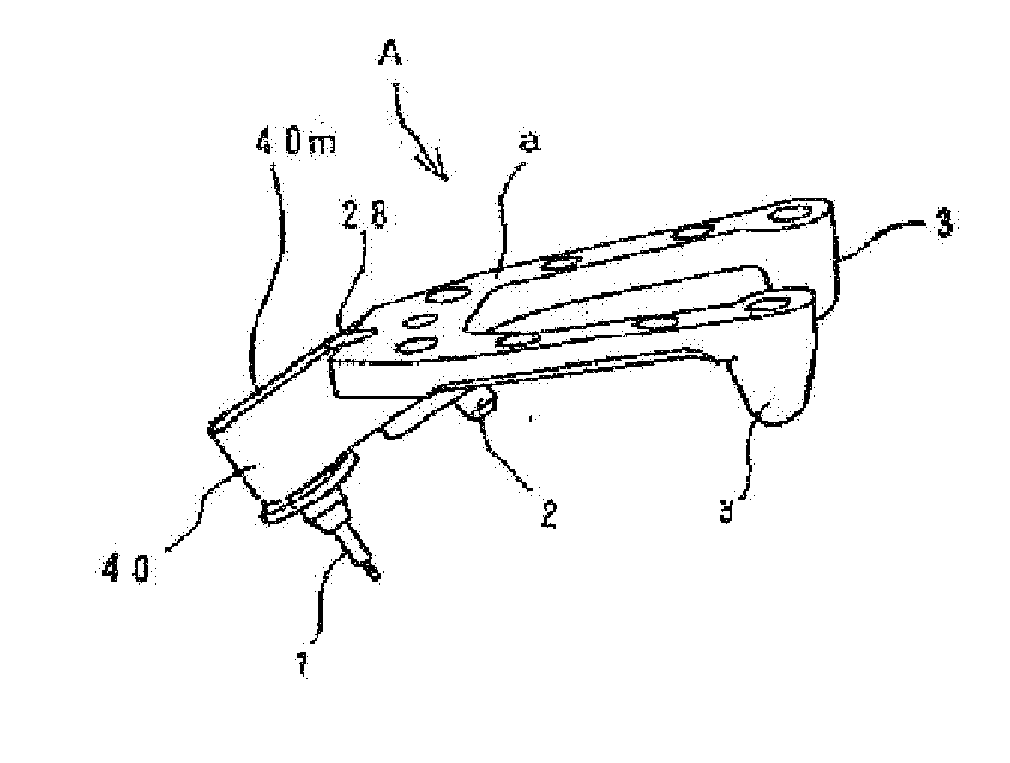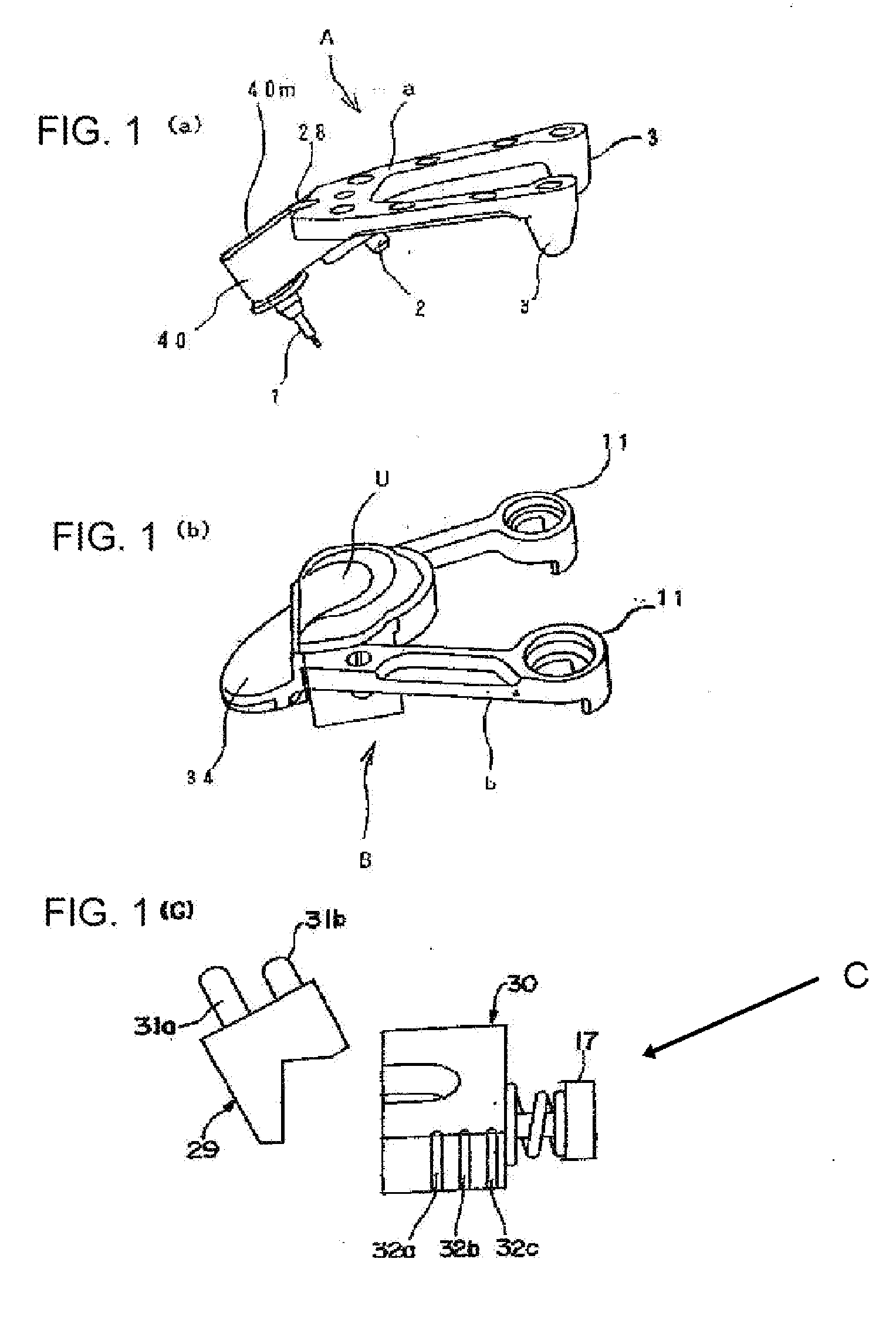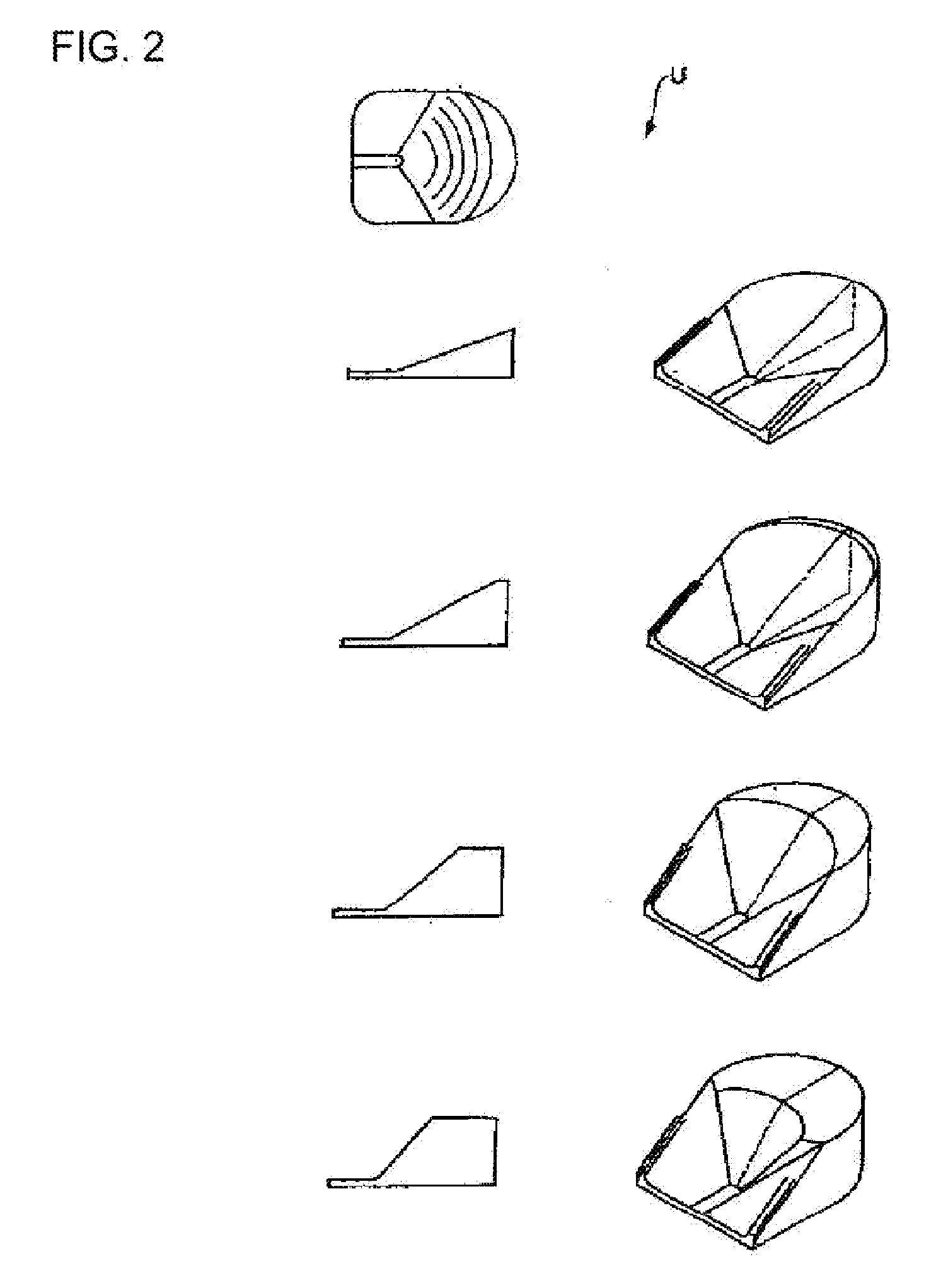In-mouth cavity tracing device
a tracing device and in-mouth cavity technology, applied in the field of tracing devices, can solve the problems of inability to determine the correct center position, the patient's load is heavier, and the natural movement of the lower jaw cannot, so as to prevent or eliminate shaking, prevent or eliminate the effect of shaking, and smooth detachment of these parts
- Summary
- Abstract
- Description
- Claims
- Application Information
AI Technical Summary
Benefits of technology
Problems solved by technology
Method used
Image
Examples
Embodiment Construction
[0071] Embodiments of the disclosed subject matter will now be described in detail with reference to FIGS. 1 to 7. The same reference numerals, etc. are used in the embodiments to refer to the same or similar structures and detailed explanation thereof is omitted.
[0072] Since the embodiments mentioned below are suitable, and concrete examples of the disclosed subject matter, certain features are technically fixed. However, the scope of the disclosed subject matter is not limited to the particular embodiments or the specific structures for each embodiment.
[0073] First of all, a summary outline of the disclosed subject matter is described as follows. The jaw-relator can include the upper jaw frame (plate), the lower jaw frame (plate), and the coupling tool that connects these jaw frames (plates) and locates them to the starting position in the mouth cavity. The upper jaw frame (plate) is installed in a bite floor of the upper jaw by, for example, an immediate polymerized resin, and ...
PUM
 Login to View More
Login to View More Abstract
Description
Claims
Application Information
 Login to View More
Login to View More - R&D
- Intellectual Property
- Life Sciences
- Materials
- Tech Scout
- Unparalleled Data Quality
- Higher Quality Content
- 60% Fewer Hallucinations
Browse by: Latest US Patents, China's latest patents, Technical Efficacy Thesaurus, Application Domain, Technology Topic, Popular Technical Reports.
© 2025 PatSnap. All rights reserved.Legal|Privacy policy|Modern Slavery Act Transparency Statement|Sitemap|About US| Contact US: help@patsnap.com



